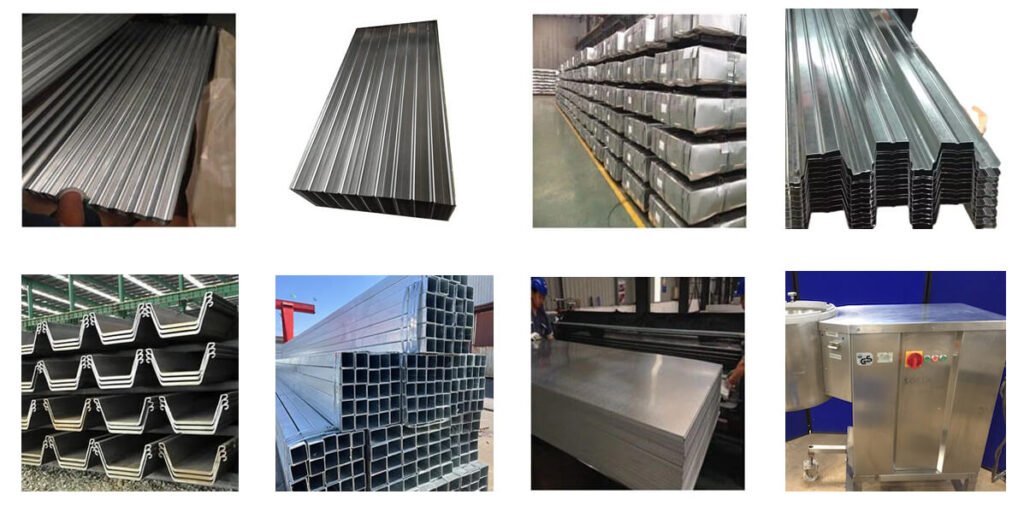Q235 Steel Grades
Versatile Structural Carbon Steel for Construction and Manufacturing
- Technical Support
Q235 Steel Technical Specifications & Applications
Q235 is a medium-carbon steel grade under the Chinese standard GB/T 700. It offers higher strength compared to Q195, with a yield strength of 235 MPa and tensile strength ranging from 370 to 500 MPa. This makes Q235 suitable for applications requiring enhanced structural integrity. It maintains good formability and weldability, allowing for easy bending, stamping, and shaping. Q235 is commonly used in construction, automotive, and manufacturing industries for products such as beams, columns, bridges, and structural components. Its moderate carbon content ensures a balance between strength and ductility, making it a reliable choice for various engineering applications.
Table of Contents
1. Typical Uses & Selection Guidance
- Q235 Overview Q235 is a medium-carbon structural steel under the Chinese standard GB/T 700. With a yield strength of 235 MPa and tensile strength of 370–500 MPa, it provides reliable strength while maintaining good formability and weldability. Q235 is widely used in construction, automotive, and manufacturing for beams, columns, bridges, and structural components. Its balanced carbon content ensures both strength and ductility.
- Corrosion Protection While not inherently corrosion-resistant, Q235 can be coated with paint, powder, or zinc for long-lasting protection. Galvanized Q235 steel is ideal for outdoor and industrial applications, resisting rust and oxidation effectively.
- Forming Advantages Q235 offers excellent bendability and elongation, making it easy to stamp, cut, and shape. It is commonly used for structural beams, chassis parts, wire rods, and metal frames. Strict quality standards ensure consistent mechanical performance.
- Summary Q235 steel combines moderate strength, high workability, and good weldability. Its adaptability for corrosion protection and wide range of structural applications make it a preferred choice in construction, manufacturing, and automotive industries.
2. Technical Specifications Table
1. Chemical Composition Requirements (Maximum %)
| Steel Grade | Carbon (C) | Manganese (Mn) | Phosphorus (P) | Sulfur (S) | Silicon (Si) |
|---|---|---|---|---|---|
| Q235 | ≤0.22% | 0.30–0.70% | ≤0.045% | ≤0.045% | ≤0.30% |
2. Mechanical Property Requirements (Maximum Values)
| Steel Grade | Min. Yield Strength (MPa) | Min. Tensile Strength (MPa) | Min. Elongation (%) Lo=80 mm | Bend Angle (°) | Mandrel Diameter (× Thickness t) |
|---|---|---|---|---|---|
| Q235 | ≥235 | 370–500 | ≥26% | 180° | — |
3. Mechanical Property Requirements (Maximum Values)
| Coating Class | Mandrel Diameter (× Thickness t) |
|---|---|
| Z100, Z200 | 1t |
| Z275, Z350, Z450, AZ150, AZ200, AM100, AM125, AM150, AM175, AM200, AM225 | 2t |
| Z600 | 3t |
4. Applicable Hot-Dip Metallic Coating Types
| Coating Class | Composition (%) | Key Features |
|---|---|---|
| Z (Zinc) | ≥99% Zinc | Basic corrosion protection; suitable for general use. |
| ZA (Zinc-Aluminium) | 95% Zn, 5% Al | Improved corrosion resistance over pure zinc. |
| ZF (Zinc-Iron) | Zinc with iron alloy | Enhanced hardness and wear resistance. |
| ZM (Zinc-Magnesium) | Zn with 2–4% Mg, 5–13% Al | Superior corrosion resistance in harsh environments. |
| AZ (Aluminium-Zinc) | 55% Al, 43.5% Zn, 1.5% Si | Excellent corrosion resistance and heat reflectivity. |
| AM (Aluminium-Magnesium) | Al with Mg alloy | High corrosion resistance; suitable for high-temperature applications. |
3. Q235 vs Q255 Steel — What’s the Difference?
| Property | Q235 Steel Grade | Q255 Steel Grade |
|---|---|---|
| Yield Strength | ≥235 MPa | ≥255 MPa |
| Tensile Strength | 370–500 MPa | 410–550 MPa |
| Elongation (80 mm) | ≥20% | ≥24% |
| Bendability | 180°, standard thickness | 180°, standard thickness |
Q235 Steel FAQ:
Q235 is a Chinese standard carbon structural steel under GB/T 700. It offers moderate strength, excellent weldability, and good formability, making it widely used in construction and manufacturing. The “Q” denotes yield point, and “235” refers to its yield strength in MPa. Q235 is comparable to ASTM A36 and S235JR internationally.
Q235 steel includes four grades: Q235A, Q235B, Q235C, and Q235D. They differ mainly in Charpy impact test requirements. Q235A has no impact test, Q235B requires +20°C testing, while Q235C and Q235D are suitable for colder environments with lower temperature impact tests.
Yes, Q235 steel has excellent weldability. Its low carbon content allows welding with common methods like SMAW and GMAW without preheating, enabling efficient fabrication for structural and industrial applications.
Cost-effective: Widely produced and available at a competitive price.
High weldability: Easily welded using various methods, saving time and costs.
Versatile applications: Used in construction (beams, columns, trusses), automotive parts, machinery, and pipelines.
Moderate strength: Provides structural stability for a wide range of applications.
Q195: Yield strength ≥195 MPa, tensile strength 315–430 MPa, excellent formability.
Q235: Yield strength ≥235 MPa, tensile strength 375–500 MPa, higher strength for structural applications.
Q195 is preferred when moderate strength and high workability are needed, while Q235 is better for structural uses requiring higher strength.







